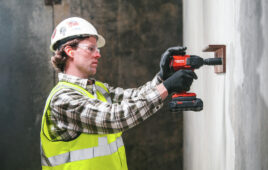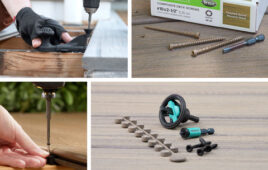Written by Jody Muelaner

Clinch joining presses sheet metal together so that it joins without the use of fasteners, welds, or adhesive.
Clinch joining is also known as press-joining, or simply clinching. It is a way to rapidly and cost-effectively join sheet metal without the use of fasteners, welding, or adhesives.
A punch is pressed through both layers of sheet metal, into a die, in such a way that they become locked together. Clinch joining is, therefore, only suitable for ductile sheet material — typically from 0.5 to 3mm in thickness.
The shape of the punch and die used for clinching cause the sheets to flow outwards at the bottom of the stroke. The resulting overhang locks the sheets together. A radially sprung die is typically used, allowing this expansion and the subsequent removal from the die.
The tooling can take several different forms with propriety clinching processes developed by many different companies. The tools may be circular or rectangular in profile and are either non-piercing or semi-piercing. Non-piercing clinching does not tear the sheet material while piercing produces slits in the material and is typically used with rectangular tools.
Clinching is generally not as strong as other methods of fastening, such as spot welding or self-piercing rivets. However, joint strength can be verified by non-destructive testing by dimensional measurement of the formed joint.
For aluminum sheets, clinch joints may also have higher fatigue life than spot welds.
The main advantages of clinching relate to costs and operational simplicity. It’s typically used for high-volume products that do not require high-strength joints.
For example, household appliances, ventilation ducts, and non-structural automotive panels. Clinch joints are usually not used for visible surfaces due to their appearance. Another advantage of clinching, when compared to welding, is that dissimilar materials can be joined in this way, such as steel and aluminum.
Additionally, clinching does not require surfaces to be treated before fastening and does not produce any heat effects in the parts. From a safety perspective, there are no sparks, arcs, or fumes. It usually only requires an air supply with no electrical requirements.





Tell Us What You Think!